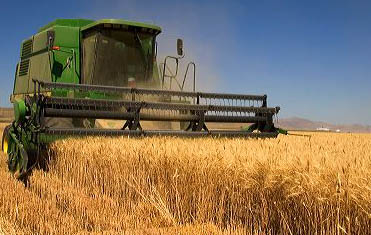Federal farm subsidies strongly favor California's largest agribusinesses

New data compiled by the Environmental Working Group (EWG) shows that the majority of federal subsidy dollars collected by California farmers go to the state's largest agribusinesses. Farm sustainability advocates sa the figures highlight the skewed priorities of federal agricultural officials and serve to identify the rampant waste plaguing the USDA's subsidy program.
Last year, the top one percent of farm subsidy recipients in the state (mainly cotton and rice growers) received a staggering $57 million in aid at an average of $453,000 per recipient, according to the EWG's latest Farm Subsidy Database report. Compare this to the allowance for the bottom 80 percent of agriculture, which received less than $1,400 per farmer.
Farmers who don't grow cotton, rice, corn, livestock or wheat, receive little to no direct subsidy payments. Yet, almost half of California's $36 billion-a-year farm revenue is generated outside the commodity crop market in the production of fruits, vegetables and nuts – so called “specialty crops”. By comparison, rice and cotton accounted for less than three percent of market value of the state's total agricultural output for 2008, the last year such statistics were available.
Nationally, 44 percent of federal crop subsidies went to cotton and rice farmers in 2009. Kari Hamerschlag, Senior Analyst at EWG, points out that “much of these subsidies came from programs that paid based on past production, whether or not cotton was still being grown.” In fact, cotton acreage throughout the state has decreased dramatically since 2009 subsidy apportionment figures were cast. This means that California agribusinesses are receiving a federal stipend while creating little (if any) revenue for the state.
In his analysis of the latest agricultural subsidy data, Hamerschlag writes, “The EWG Farm Subsidies database starkly reveals the imbalance, waste and skewed priorities of federal farm programs in California. It is a system that disproportionately benefits relatively few big growers of thirsty, chemical-dependent crops while failing to address the environmental challenges facing California agriculture.”
Hamerschlag says that the $13 billion in federal commodity subsidy payments and crop insurance premiums doled out in 2009 outpaced funding for agricultural conservation programs, a key source of aid for sustainable-ag, by more than 3-to-1. “In California, the disparity was even greater: Subsidies outpaced conservation funding for agriculture by a more than 5-to-1 margin.”
Conservation funding not only supports small farmers but larger specialty crop producers through grants promoting water conservation, good land stewardship and overall farm sustainability. Unfortunately, the funding gap that exists between commodity subsidies and agricultural conservation programs limits the profitability of small farms, and in turn, restricts the Golden State's agricultural potential.
This is why a more “intelligent and equitable strategy” for funding all areas of California's diverse agricultural system is needed, says Hamerschlag.




